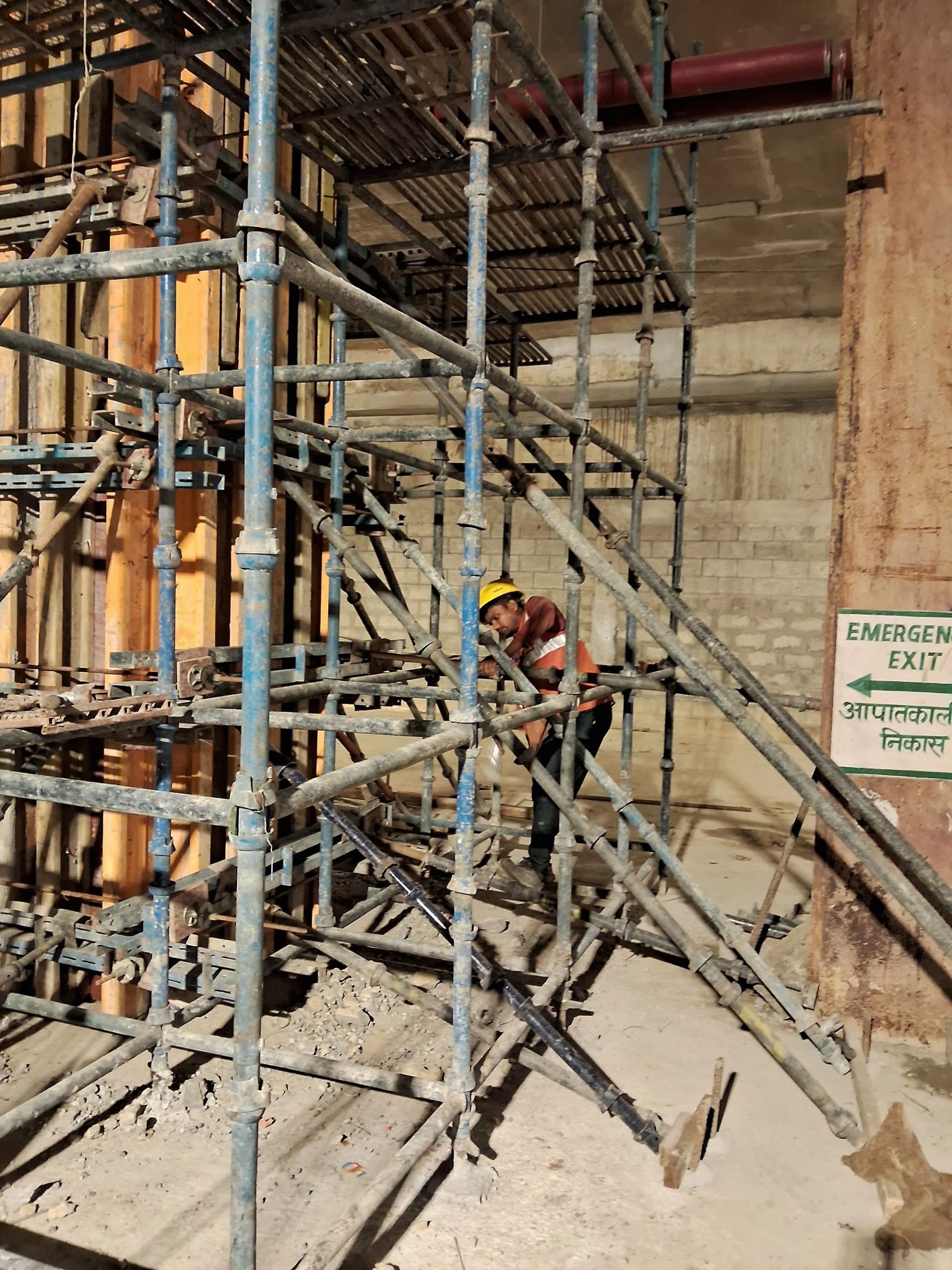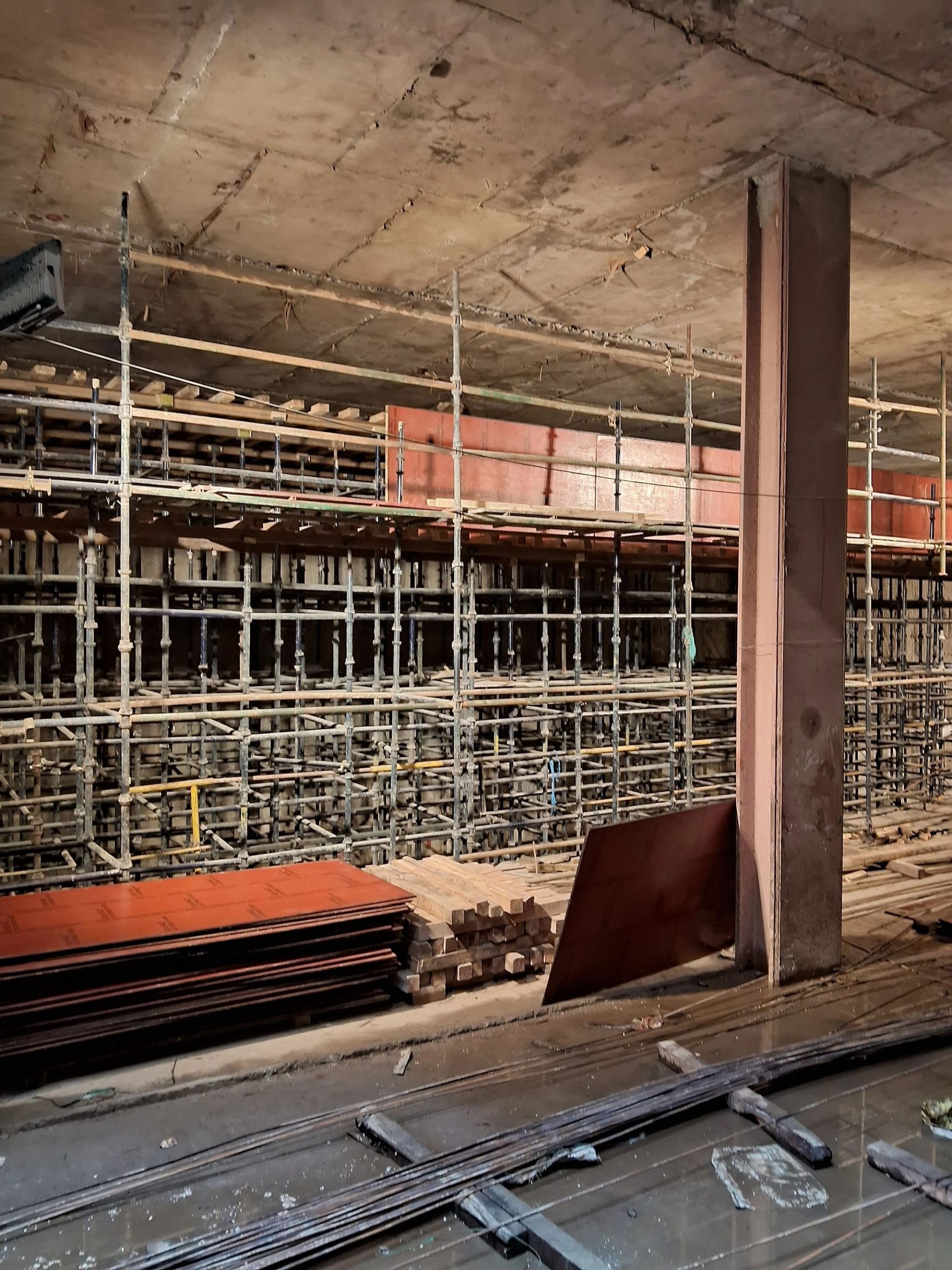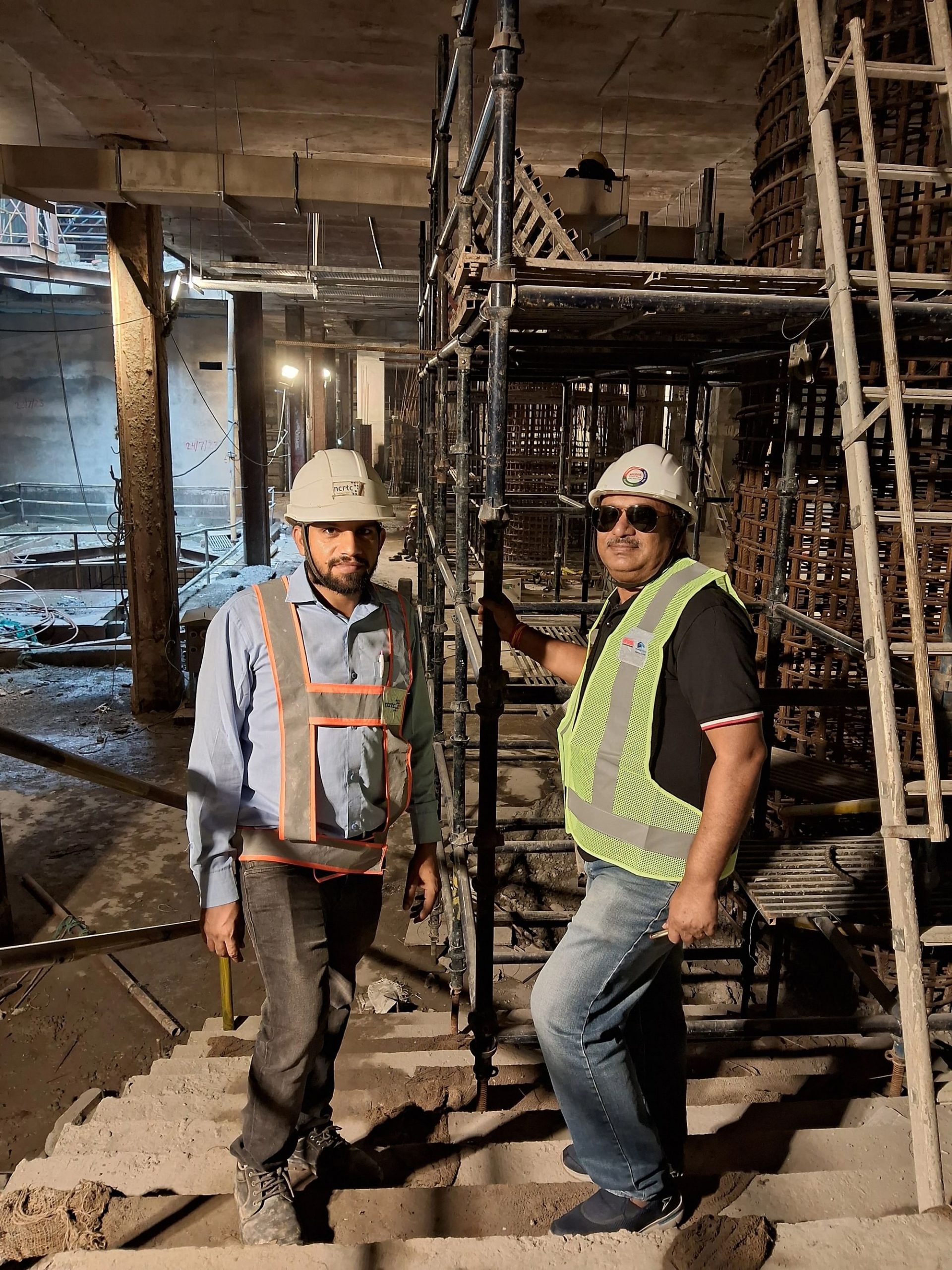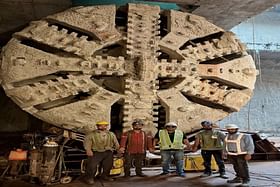NCRTC is going to operationalise the 17-km-long priority section between Sahibabad to Duhai soon, much before its schedule.
The entire corridor from Delhi to Meerut is targeted to be open for the public in the year 2025.
Amidst the middle of a busy thoroughfare, about 250-strong workforce are going ahead to complete the construction of the underground Begumpul RRTS station in Meerut.
The workforce included engineers, machine men, safety men, tunnel boring operators and earth excavators, among other skilled workers.
Meerut has three under ground stations — Meerut Central, Bhaisali, Begumpul and six tunnels, out of which Begumpul has maximum depth of 22 m.
The Rs 1,530 crore work order contract involves construction of all six tunnels and three underground stations.
While the work on three parallel tunnels are completed now, the next level work of track-linking is underway now, said a site engineer who is at the work site since 2021.
The 82-km-long Delhi-Ghaziabad-Meerut Regional Rapid Transit Service (RRTS) Corridor is expected to be fully operational by 2025. The entire stretch includes a 12 km underground portion and 70 km elevated section.
“Beside Covid,” he said, “constant rains also affected the pace of the work. But somehow we managed to meet the target given to us.”
Using a top down method, the 246-m-long Begumpul RRTS station with 25 m width is being constructed from the roof of the station first, followed by the underground construction.
Explaining the various levels of the underground station, the site engineer said there are four levels here — ground, mezanine, concourse and platform at the last level.
While track is at the lowest level, concourse will have public utilities and mezanine will have office spaces.
“We used new austrian tunneling method (NATM) which is effective for tunnel construction or cross passage in small and curved places. We have named it as Sudarshan,” the engineer said.
Another technician responsible for ensuring safety said, “It is very challenging as we are constructing the underground station amid the busy market place.”
The majority of the workforce is from Jharkhand, Bihar and West Bengal.
Meerut is a business centre so there are four entry and exits of the station, such that all four major markets, including Abu Lane and Lal Kurti Market of the area, are connected.
Besides a lift at each entry point, there would be 16 escalators at the station. The station will also be connected with the Meerut Metro service.
In the underground section of the Delhi-Ghaziabad-Meerut RRTS corridor, cross passages are being constructed in parallel tunnels. These cross passages are being constructed to connect both the tunnels based on the NATM technology.
In the underground portion of the RRTS corridor, two parallel tunnels are being constructed for the movement of trains on each route. Also, provision of one cross passage has been made in these tunnels at a distance of every 250 m.



Cross-passage is a part between the two tunnels which enables movement of people from one tunnel to another in case of necessity or emergency. These cross passages are helpful in the operation of trains and the safety of passengers in case of emergency in the underground section.
In case of an emergency, if train operations in one tunnel stop due to any unforeseen reasons, then through these cross passages, commuters can be evacuated from the other tunnel.
For the construction of the cross-passage by NATM technique, sequential excavation method is adopted.
First, an inner line is drawn on the soil with the help of steel plate, girder and wire mesh — the area where the excavation has to be made for the cross-passage is marked. Then, the soil is excavated with the help of small machines operated by hand.
Rock bolts are used to stabilise the soil. During this construction process, the soil pressure and its effect on the surface are continuously checked through instruments. While constructing the cross passage, it is reinforced with concrete, after which tunnel rings are installed to give it more strength and stability.
A total of six tunnels are being constructed in Meerut on the corridor, in which a total of nine cross-passages will be constructed.
Six cross-passages, in 2-km-long parallel tunnels, are being constructed between Bhainsali to Meerut Central, two cross-passages in 1-km-long parallel tunnels between Bhainsali to Begumpul and one cross-passage between about 700-m-long parallel tunnels between Gandhi Bagh to Begumpul is being constructed.
On the other hand, four tunnels are to be constructed on the RRTS corridor in Delhi, in which a total of 12 cross-passages will be constructed.
Eight cross-passages will be constructed in both the 3-km-long parallel tunnels, under construction between New Ashok Nagar to Anand Vihar and a total of four cross-passages will be constructed in the 2-km-long parallel tunnels under construction between Anand Vihar to Sahibabad.
It may be noted that about 90-m-long tunnel boring machine (TBM) Sudarshan is being used for tunnelling in the RRTS project. The Sudarshan moves forward by cutting the soil and installing the tunnel rings.
In this way, the tunnel construction keeps progressing as it moves forward. Tunnelling with the help of a TBM is one of the most advanced techniques.
For the first time in any urban mass-transit project in India, tunnel of a 6.5 m diameter is being constructed. Provision of various security measures has also been made to ensure the safety of the passengers in the underground portion. The construction of the cross passage is one such provision.
Apart from this, ventilation ducts are being constructed to ensure the air circulation in the RRTS tunnel. Also, a side walkway of 60-90 cm wide are being constructed in the tunnels, which will not only assist in maintenance activities but will also help in case of emergencies.
The RRTS project is being implemented as per the stipulated time frame.
NCRTC is going to operationalise the 17-km-long priority section between Sahibabad to Duhai soon, much before its schedule.
The entire corridor from Delhi to Meerut is targeted to be open for the public in the year 2025.


